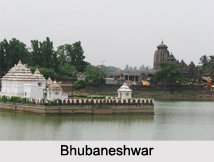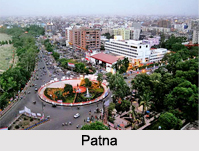 Cities of east India have the tradition, culture and arts along the vast natural beauty of Himalayan Mountain Range, sea and river. These cities are developed from the early era that is during the time of Mahabharata, from mere villages to the cultural capitals. The East Indian states like West Bengal, Odisha, Bihar and Jharkhand shares the same art and architectural styles with the same linguistic characteristics. In the early era, the eastern India was ruled by mighty indigenous rulers of Mahameghavahana dynasty, Eastern Ganga dynasty, Pala Dynasty, Sena Dynasty, Gupta Dynasty and Gajapati Dynasty. Here one can see the rich colonial heritage of both British East India Company and French East India Company along with the Buddhists circuits and renowned temples of Puri, Bhubaneshwar, Cuttack, Kolkata, Purulia, Malda, Birbhum, North and South Dinajpur District, Rajgir, Patna and Ranchi.
Cities of east India have the tradition, culture and arts along the vast natural beauty of Himalayan Mountain Range, sea and river. These cities are developed from the early era that is during the time of Mahabharata, from mere villages to the cultural capitals. The East Indian states like West Bengal, Odisha, Bihar and Jharkhand shares the same art and architectural styles with the same linguistic characteristics. In the early era, the eastern India was ruled by mighty indigenous rulers of Mahameghavahana dynasty, Eastern Ganga dynasty, Pala Dynasty, Sena Dynasty, Gupta Dynasty and Gajapati Dynasty. Here one can see the rich colonial heritage of both British East India Company and French East India Company along with the Buddhists circuits and renowned temples of Puri, Bhubaneshwar, Cuttack, Kolkata, Purulia, Malda, Birbhum, North and South Dinajpur District, Rajgir, Patna and Ranchi.
Cities of West Bengal
 West Bengal is an East Indian state with Kolkata as its capital that emerged from British rule while Darjeeling, Kalimpong and Mirik are emerged as the hill station from the very same time with the tea plantation estates. Asansol, Chandannagar, Durgapur, Bidhannagar, Howrah, Siliguri, Jalpaiguri, Bardhaman, Kharagpur, Barasat, Barakpur, Kalyani, Mahesht la, and Haldia, Krishnanagar are the major towns and cities bordered with Ganga River and Damodar River, are mapped for the commercial, industrial and tourism empowerment from the early days of India"s industrial development.
West Bengal is an East Indian state with Kolkata as its capital that emerged from British rule while Darjeeling, Kalimpong and Mirik are emerged as the hill station from the very same time with the tea plantation estates. Asansol, Chandannagar, Durgapur, Bidhannagar, Howrah, Siliguri, Jalpaiguri, Bardhaman, Kharagpur, Barasat, Barakpur, Kalyani, Mahesht la, and Haldia, Krishnanagar are the major towns and cities bordered with Ganga River and Damodar River, are mapped for the commercial, industrial and tourism empowerment from the early days of India"s industrial development.
Cities of Odisha
Located on the Eastren Ghats Mountain Range in India, Odisha is the temple state with Bhubaneshwar as the capital city that covers many deula structure temples that were erected from the time of Ganga Dynasty. Simlipal, Daringibadi and Kalinga are noted for hill station, while Dhauli Hills, Gopalpur, Puri, Rayagada District, Boudh District, Kendujhar District, Balasore District, Mayurbhanj District and Bhadrak District are noted for the Buddhist circuits and the tribal belt covered with dense forests.
Cities of Bihar
Noted as the 13th largest state in India, Bihar is popular for the history, religion and caves. It is the state where Hinduism, Jainism and Buddhism stay together. Bihar was considered a centre of power, learning, and culture from the time of Mauryan Empire. From that time Pataliputra came into emergence as the capital of North India and now Patna as the capital city of the state. Patna, Gaya, Bhagalpur, Muzaffarpur, Purnia District Darbhanga District, Arrah and Hajipur are considered as the capital cities of Hindus after Varanasi and Haridwar.
Cities of Jharkhand
Jharkhand, the industrial and tribal state with Ranchi as the capital is dotted with many temples of Deula Style as seen in Odisha; waterfalls near Ranchi; Palamau and Netarhat as the hill station; Bokaro Steel City and Jamshedpur as the industrial capital of eastern India and Deoghar, Hazaribagh and Giridih District as the place of temples, wildlife and eco tourism.



















